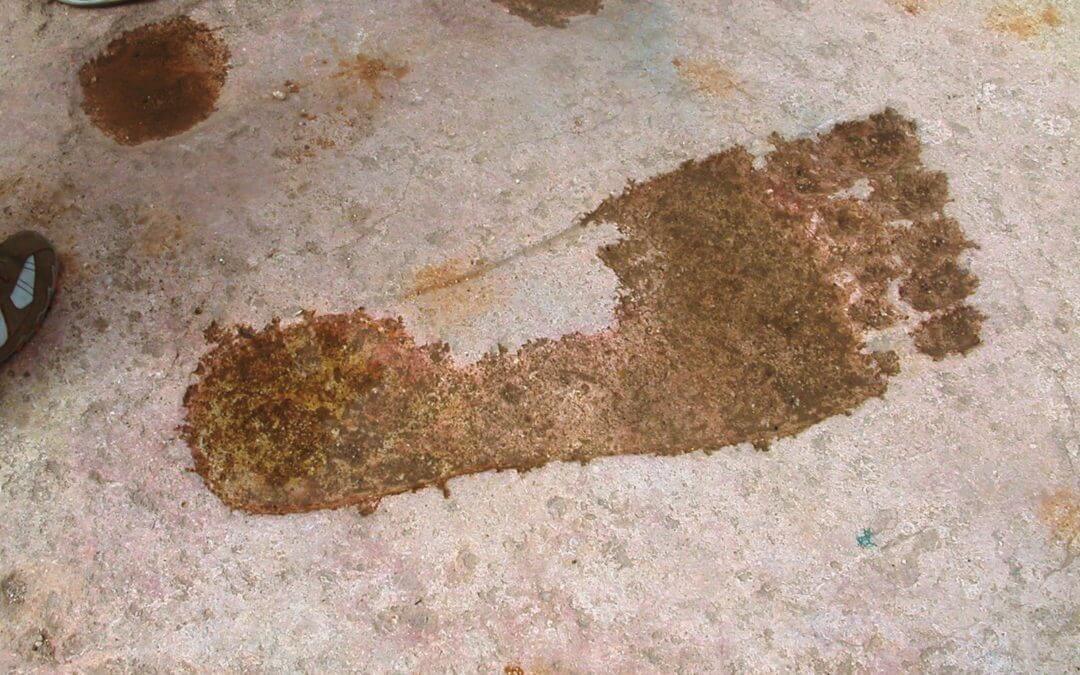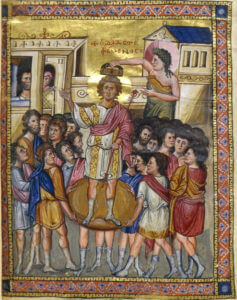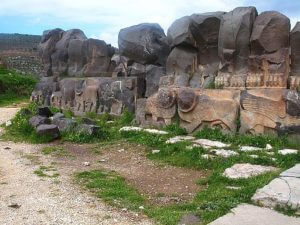
Is this a lost temple to the giants?
We live in a society influenced by the Bible and in most people’s minds, the classic biblical monarchs such as David and Solomon evoke a golden age of Israel: of wisdom, wealth and sophistication.
So it comes as a shock to most people to find out that despite over half a century of archaeological searching, we still cannot find any evidence of a monarchy at the time of King David. No palaces, no temples, no infrastructure, no masses of court records and as one archaeologist said, we cannot even find the garbage! It just did not exist at that time in that place.
Of course, people do argue that because the Temple mound, where the Dome of the Rock is currently situated, cannot be excavated, we are unable to confirm if the original Temple of Solomon which used to be the centre of the Jewish faith, actually existed there.
But even so, we would expect to find the artefacts of a great kingdom that existed in the area; an organised society like that simply leaves its mark, but we have found nothing.
This has led some leading experts to rewrite the Biblical stories understanding them to be greatly exaggerated. According to the archaeological evidence, the area around Jerusalem was just sparsely populated highlands at the supposed time of King David.
Le courronnement de David.Paris psalter (BnF MS Grec 139), folio 6v
National Library of France. Public Domain
So according to some scholars, the great monarch becomes a tribal chieftain with a band of tribal warriors instead of armies. This may be far from the sumptuous riches that the Bible describes, but it fits the picture that we see in the actual evidence.
I find this idea quite strange. Not because I am religious (I am not) or because I have a need to glorify these kings – these were not the heroes of my childhood. I find it odd that King David – such a flawed character would be pure fiction. He is murderous, conniving and backstabbing to the point where even his own sons rise up against him.
Far from being the happy succession from father to son, we tend to assume happened, Solomon was not King David’s eldest son but the son of the woman he spied from the rooftops who was married to someone else. David had the husband out of the way and got his wife Bathsheba pregnant. (So much for ‘you shall not commit adultery or murder’!)
I just don’t think it is human nature to provide a character to your glorious made-up ancestral King and make him into such a nasty piece of work. The fact that there are two versions of the story of King David in the bible and one has been sanitised shows that someone was indeed embarrassed at his antics at some point.
It started me wondering if the stories have not been transplanted from another place and time and brought to Jerusalem in the memories of another people. Could it be that we have been looking for evidence in the wrong place.
I find it very intriguing that although nothing like the Temple of Solomon or his kingdom can be found in Jerusalem and the ancient Kingdom of Judah, further north there exists a temple that fits the description of the Temple of Solomon very closely. This is the Ain Dara Temple in Syria and it has some very interesting features.
Its measurements, the way in which it is decorated and its layout greatly resembles the Temple of Solomon in the Bible. There are other Temples in the area which are of a similar style. And in contrast to Judah in the south at this time, the writing of a great civilisation has been found: for example over 20,000 clay tablets at the site of Ebla or Tell Mardikh also near Aleppo in Syria. Here we do find temples, palaces and a lot of writing.
By Odilia (Own work) [GFDL (http://www.gnu.org/copyleft/fdl.html), CC-BY-SA-3.0 (http://creativecommons.org/licenses/by-sa/3.0/) or FAL], via Wikimedia Commons
Could it be that the stories we see in the Bible are actually memories of people who migrated from north to south? They just transplanted their memories of the glory days to their new habitat.
The Old Testament only started to be written down after the time of the Babylonian exile in 700s BC. The people we now call ‘Jews’ had just been through a massive humiliation. They needed to rally round and write down their history in order to unite under a common story. This was possibly when stories which were originally about what we now call Syria were simply incorporated into the narrative of the people who lived in Judah.
Was it possible that the ones who had migrated from the north brought their stories with them and transplanted them? If so it gives a very interesting slant on what else can be found at Ain Dara.
Because almost as if a god or goddess had entered the temple, the footprints actually exist of what appears to be a giant being. Now the Old Testament does indeed mention giants on some occasions. We are also rediscovering many reports from around the world in the last 200 years especially of giant skeletons having been found.
Could Ain Dara be evidence that the Bible and other giant myths are true? Could the temple be a site where an actual giant god mentioned in the bible was present? I am going to be discussing more about these ideas in the forthcoming book and mystery school so stay tuned.
Image: By Odilia (Own work) [GFDL (http://www.gnu.org/copyleft/fdl.html), CC-BY-SA-3.0 (http://creativecommons.org/licenses/by-sa/3.0/) or FAL], via Wikimedia Commons




